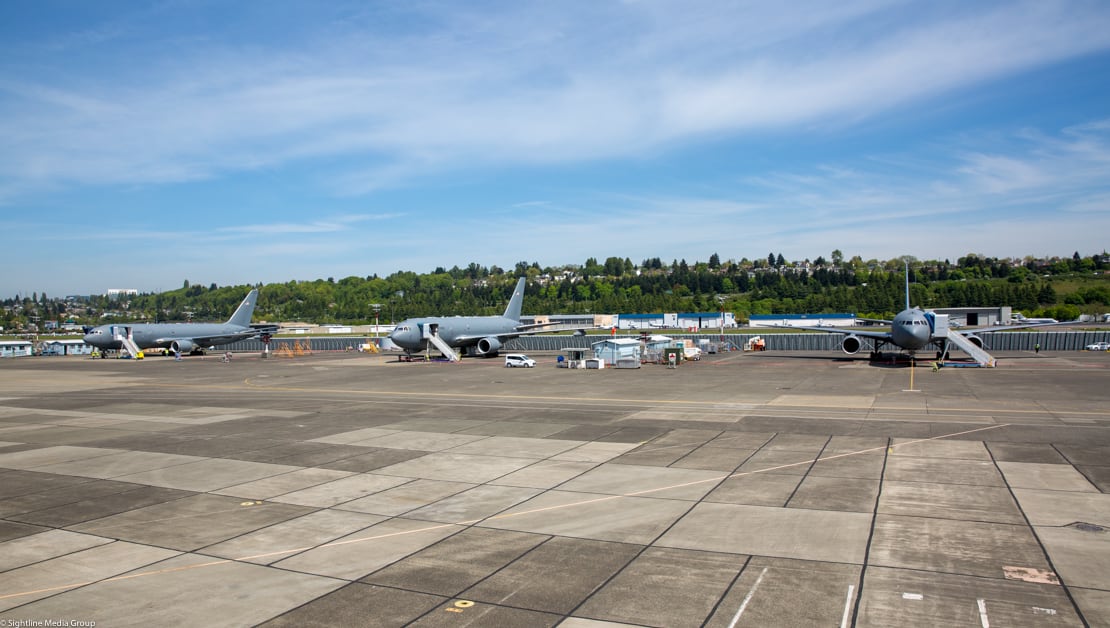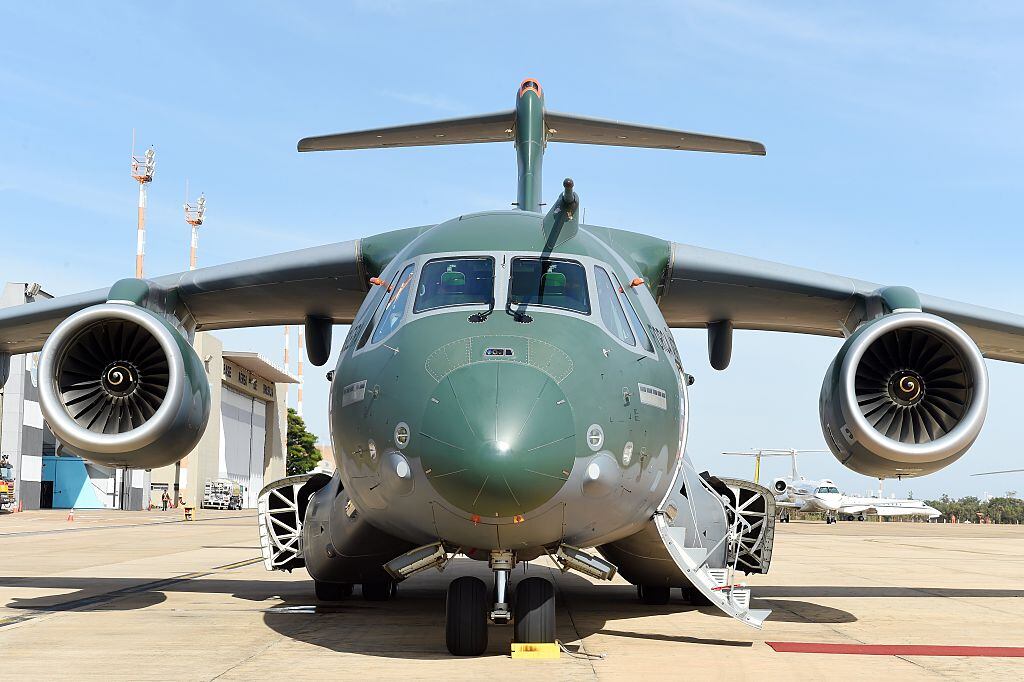FARNBOROUGH, England — The U.S. Air Force has completed testing of a fix for a critical but troubled system on the KC-46, and so far the results are promising, the service’s top acquisition executive said Monday.
However, Will Roper — the assistant secretary of the Air Force for acquisition — said it will take time for the service to figure out whether it can downgrade the two deficiencies associated with the new tanker’s remote vision system, which is necessary to allow the boom operators to steer the boom into the receptacle.
“As a former test evaluator I hate when people commented on tests before we were done, and I’m going to try not to do it here other than to say that we have reasons to be hopeful,” he said during an exclusive interview with Defense News at the Farnborough Airshow. “But we have more data to go through.”
Read more from the 2018 Farnborough Airshow!
The KC-46’s remote vision system, or RVS, is thought to be responsible for two category-1 deficiencies — the most serious type of technical problem for which there is no known workaround.
In certain lighting conditions, the Rockwell Collins-designed RVS did not provide boomers with clear imagery of the receiver aircraft. That in turn led to a second problem, where boomers would accidentally scrape the airframe of the receiver without knowing it.
RELATED

KC-46 prime contractor Boeing has said it could fix both problems by tweaking the RVS’ software to clarify the picture and give operators more control over the image settings.
On July 6, the Air Force and Boeing completed flight testing of the RVS’s newest software load, the service announced Friday.
However, the services has only begun analyzing the data, which needs to be evaluated by the program management team and the operational community before a final decision, Roper said.
“It really is a net assessment looking at, based on how the RVS works, under what conditions does it do the job [with] no questions asked. Under what conditions does it do the job with some questions asked, and then how important are those questions?” he said.
“Right now it appears that the workarounds that we’ll need for the conditions we’ve looked at are very small. So, so far, so good. But truth in advertising, we’re not done.”
If the RVS system functions properly with some workarounds in place, the Air Force can downgrade that deficiency to the lower category-2, Roper said. The Air Force has said downgrading those deficiencies are a prerequisite for accepting delivery of the first KC-46 scheduled for October.
Overall, Roper seemed pleased with the progress on the KC-46 program, which has been marred over the past several years by a series of delays and price growth. Boeing, which is locked into a fixed-price contract that makes it responsible for any cost overruns past $4.9 billion, has already had to pay more than $3 billion in penalties.
Under the current agreement between Boeing and the Air Force, Boeing must fufill a “required assets available” milestone by delivering 17 certified tankers and nine refueling pods by October. With the first tanker due for delivery that month and the Air Force capable of accepting a maximum of three per month, it’s unlikely that will be possible.
But Roper is hopeful that Boeing will be able to deliver the first KC-46 tanker on time now that the company and the Air Force have agreed on a single schedule for testing and delivery.
“Boeing’s schedule and the Air Force’s schedule were nine months apart,” he said. “As a former program manager, I had no idea how to manage something where you’re not keeping time the same way.”
Earlier this year, he led several deep-dive meetings with Boeing and officials to bring schedules into alignment.
“Although it’s not the kind of innovation that you think about for technology, we found ways to resynchronize the testing and airworthiness certifications and FAA certifications,” he said. “We’re still doing all of the checks, but we’re doing them in orders that aren’t normal but still getting all the data that we need. That allowed us to compromise and get to one schedule.”
RELATED

Aside from finishing the RVS flight tests in early July, the Air Force and Boeing wrapped up tests that validated the KC-46’s ability to refuel the F-16 and C-17 aircraft. That, combined with earlier testing where the KC-135 refueled a KC-46, is the minimum level of flight tests needed before delivery.
“This is a significant achievement for the Boeing-Air Force team and continues us on our path to first delivery in October,” Mike Gibbons, Boeing KC-46A tanker vice president and program manager, said in a statement released Monday.
However, even if the RVS deficiencies are downgraded or eliminated, Boeing must still fix one more category-1 deficiency to the centerline drogue system. A mechanical lock on the CDS sometimes releases without being commanded to unlock, but Boeing plans to install a software fix that will retool the tension of the drogue.
“Laboratory testing of Boeing’s hardware and software fixes to the CDS deficiency is complete,” Air Force spokeswoman Maj. Emily Grabowski said. “Flight test verification of the CDS fixes is now forecasted for September 2018. The Air Force plans to accept aircraft when the fix for the remote vision system is installed and after execution of a successful Navy test of the CDS.”
Valerie Insinna is Defense News' air warfare reporter. She previously worked the Navy/congressional beats for Defense Daily, which followed almost three years as a staff writer for National Defense Magazine. Prior to that, she worked as an editorial assistant for the Tokyo Shimbun’s Washington bureau.







